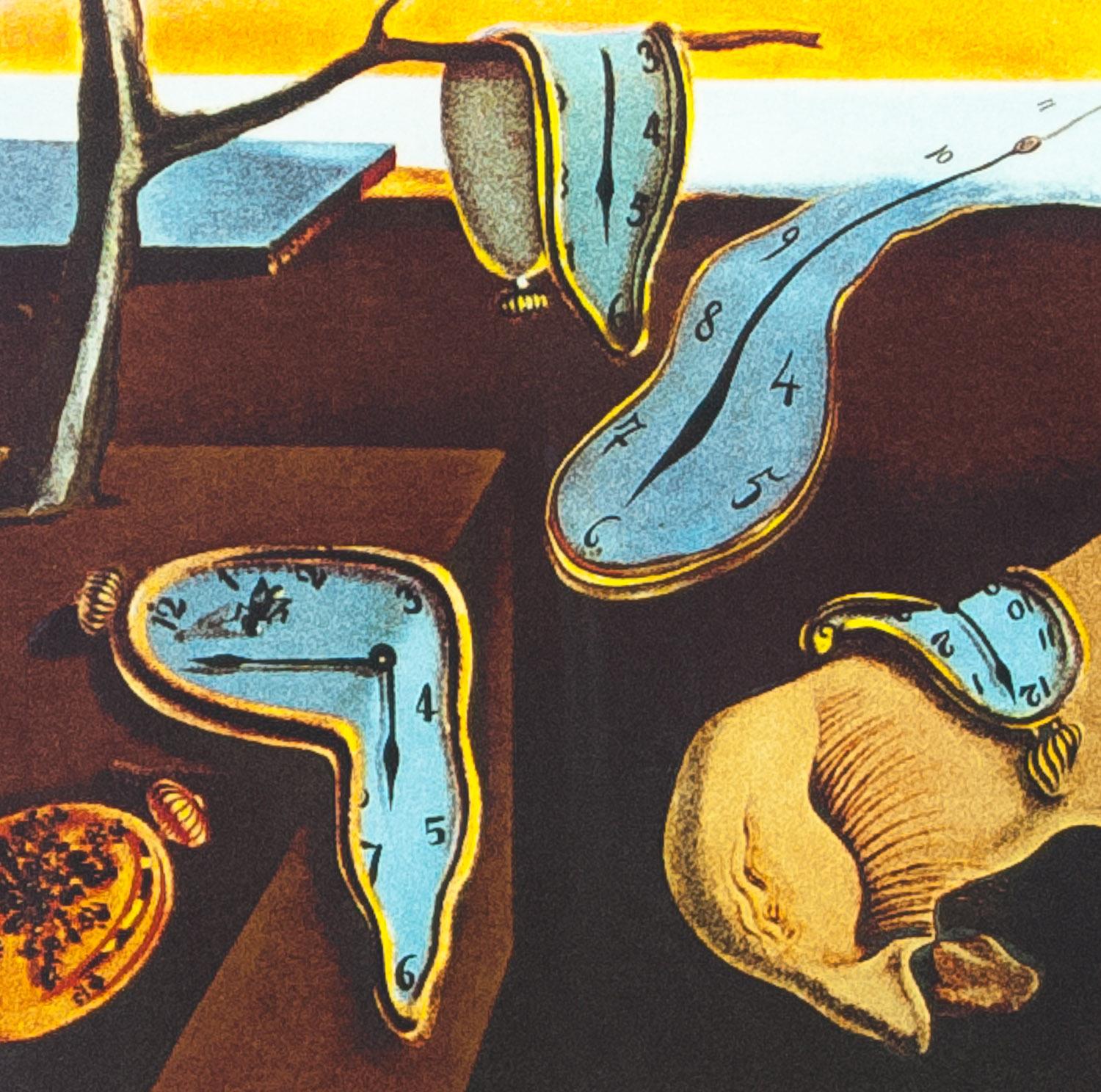


Retrieved October 22, 2019.Salvador Dali’s iconic painting, The Persistence of Memory, is quite probably one of the most famous works of art in the entire world, along with Da Vinci’s Mona Lisa, Picasso’s Guernica, and a few others-and certainly, it is the most-recognizable surrealist painting ever created.Īfter all, whether or not you know your Braque from your Baroque, those strangely melting pocket watches are instantly recognizable. Commentary on 40+ works of art by Salvador Dalí.

Archived from the original on 25 September 2014. ^ "Dalinian symbolism I Salvador Dalí I Espace Dalí".Gardner's Art Through the Ages (9th ed.). ^ De la Croix, Horst Tansey, Richard G.The painter insisted on this explanation in his reply letter to Prigogine, who took it as Dalí's reaction to Einstein's coldly mathematical theory. Surprisingly, Dalí said that his soft watches were not inspired by the theory of relativity, but by the surrealist perception of a Camembert cheese melting in the sun. The Dali Dimension: Decoding the Mind of a Genius (DVD). It includes the first appearance of what is perhaps his most enduring image: the 'soft watch'. The death of Salvador Dali evokes the image of his most famous painting, Persistence of Memory. The strange and foreboding shadow in the foreground of this painting is a reference to Mount Pani. Many of Dalí's paintings were inspired by the landscapes of his life in Catalonia. The craggy rocks to the right represent a tip of Cap de Creus peninsula in north-eastern Catalonia. The Persistence of Memory employs "the exactitude of realist painting techniques" to depict imagery more likely to be found in dreams than in waking consciousness. The fly appears to be casting a human shadow as the sun hits it. Another insect that is present in the painting is a fly, which sits on the watch that is next to the orange watch. Dalí often used ants in his paintings as a symbol of decay. The orange clock at the bottom left of the painting is covered in ants. The iconography may refer to a dream that Dalí himself had experienced, and the clocks may symbolize the passing of time as one experiences it in sleep or the persistence of time in the eyes of the dreamer. One can observe that the creature has one closed eye with several eyelashes, suggesting that the creature is also in a dream state. It can be read as a "fading" creature, one that often appears in dreams where the dreamer cannot pinpoint the creature's exact form and composition. The creature seems to be based on a figure from the Paradise section of Hieronymus Bosch's The Garden of Earthly Delights, which Dalí had studied. It is possible to recognize a human figure in the middle of the composition, in the strange "monster" (with much texture near its face, and much contrast and tone in the picture) that Dalí used in several contemporary pieces to represent himself – the abstract form becoming something of a self-portrait, reappearing frequently in his work. Smarthistory - Dali's The Persistence of Memory Asked by Ilya Prigogine whether this was in fact the case, Dalí replied that the soft watches were not inspired by the theory of relativity, but by the surrealist perception of a Camembert melting in the sun. This interpretation suggests that Dalí was incorporating an understanding of the world introduced by Albert Einstein's theory of special relativity. As Dawn Adès wrote, "The soft watches are an unconscious symbol of the relativity of space and time, a Surrealist meditation on the collapse of our notions of a fixed cosmic order". It epitomizes Dalí's theory of "softness" and "hardness", which was central to his thinking at the time.

The well-known surrealist piece introduced the image of the soft melting pocket watch.


 0 kommentar(er)
0 kommentar(er)
